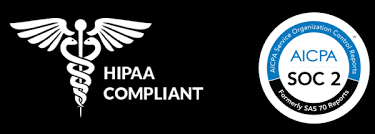Unlocking the Power of Claims Data: Enhancing Human Capital and Driving Cost Savings

In today’s data-driven world, organizations are continually seeking ways to optimize their operations and cut costs. In the realm of human resources and healthcare management, one invaluable resource that often goes underutilized is claims data. This data, which includes detailed records of healthcare services billed to health insurance, can offer deep insights into both human capital analytics and cost savings opportunities. Leveraging claims data effectively can help organizations improve employee well-being, enhance productivity, and significantly reduce healthcare expenditures.
Human Capital Analytics: Transforming Employee Health Insights
1. Employee Health and Wellness Analysis
Understanding the health landscape of your workforce is crucial. Claims data provides a detailed view of chronic conditions prevalent among employees. By identifying these conditions, organizations can develop targeted wellness programs aimed at improving health outcomes and reducing associated healthcare costs. For instance, if claims data reveals a high prevalence of diabetes or hypertension, a company might implement specific initiatives like health screenings, dietary counseling, or fitness challenges to address these issues proactively.
2. Absenteeism and Productivity
Health-related absenteeism is a significant concern for many employers, leading to lost productivity and increased costs. Claims data can help analyze the correlation between health issues and absenteeism. For example, frequent sick leaves could indicate underlying chronic conditions or insufficient access to preventive care. By addressing these root causes through better health benefits or wellness programs, organizations can reduce absenteeism and improve overall productivity.
3. Benefit Utilization
Understanding how employees utilize their health benefits is essential for optimizing plan designs. Claims data reveals patterns in service utilization, showing which healthcare services are most frequently used. This information helps in tailoring benefits packages to better meet employee needs while avoiding unnecessary costs. Additionally, encouraging the use of preventive services, as highlighted by claims data, can lead to long-term cost savings by catching potential health issues early.
4. Employee Satisfaction and Retention
Access to quality healthcare is a significant factor in employee satisfaction and retention. Claims data can be used to measure employee satisfaction with healthcare providers and services. By ensuring that employees have access to high-quality, convenient healthcare options, organizations can enhance satisfaction and retention rates. Moreover, analyzing claims data helps in identifying any gaps in the current benefits offerings, allowing companies to make informed adjustments.
Cost Savings Analytics: Driving Efficiency and Reducing Expenditures
1. Cost Trend Analysis
Tracking and analyzing healthcare spending trends is a critical aspect of cost savings analytics. Claims data provides a comprehensive view of spending patterns, helping organizations identify areas of excessive costs. For example, high-cost claimants or frequent emergency room visits can be pinpointed and addressed. Understanding these trends allows organizations to implement targeted interventions and control healthcare expenditures more effectively.
2. Risk Stratification
One of the most powerful uses of claims data is in risk stratification. By analyzing this data, organizations can identify high-risk employees who are likely to incur significant healthcare costs in the future. These high-risk groups can then be targeted with specific health interventions, such as personalized health coaching or disease management programs. Such proactive measures not only improve health outcomes but also mitigate future healthcare costs.
3. Plan Design Optimization
Claims data plays a pivotal role in optimizing health plan designs. By examining the utilization and costs of different services, organizations can create health plans that balance cost and care quality. For instance, data might show that employees frequently use out-of-network providers, leading to higher costs. Adjusting the plan design to include a broader network of in-network providers can encourage cost-effective healthcare choices and reduce overall expenses.
4. Vendor Performance Evaluation
Evaluating the performance and cost-effectiveness of healthcare providers and networks is another crucial application of claims data. Organizations can compare the costs and outcomes of different providers, ensuring that employees receive high-quality care without unnecessary expenses. By using claims data to conduct a cost-benefit analysis, companies can make informed decisions about which vendors and services offer the best value.
5. Predictive Modeling
Predictive modeling is a forward-looking approach that uses historical claims data to project future healthcare costs. This helps organizations budget more accurately and develop risk mitigation strategies. For example, if predictive models indicate a potential rise in healthcare costs due to an aging workforce, the organization can proactively invest in preventive care and wellness programs to offset these costs.
Conclusion
Harnessing the power of claims data offers a dual advantage for organizations: enhancing human capital and driving cost savings. By delving into the details of employee health and benefit utilization, companies can create more effective wellness programs, optimize benefit offerings, and improve employee satisfaction. Simultaneously, a keen focus on cost trends, risk stratification, and plan design optimization enables significant cost reductions. In an era where data is king, leveraging claims data is a strategic move that can lead to healthier employees and healthier bottom lines.
Know how are are enhancing employer partnerships through the advanced analytics:
Healthcompiler.com/dpc-insights



